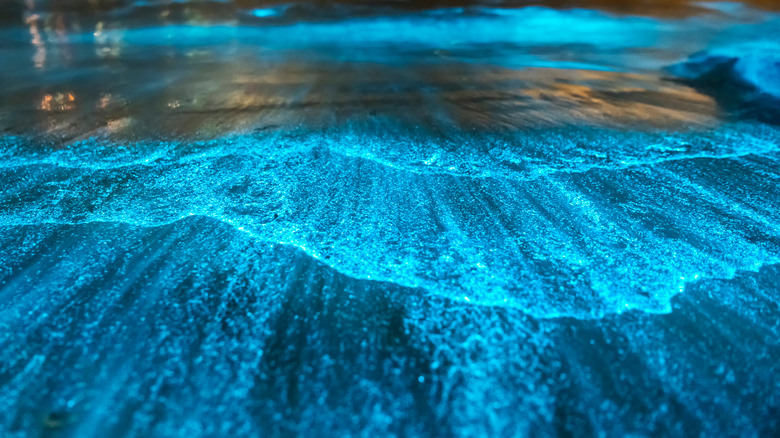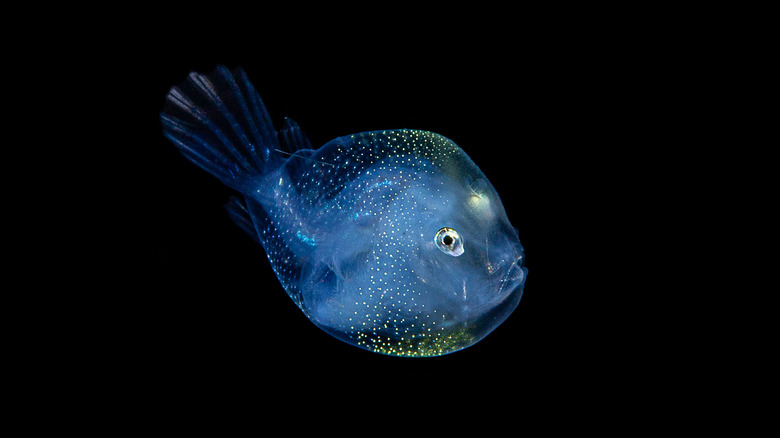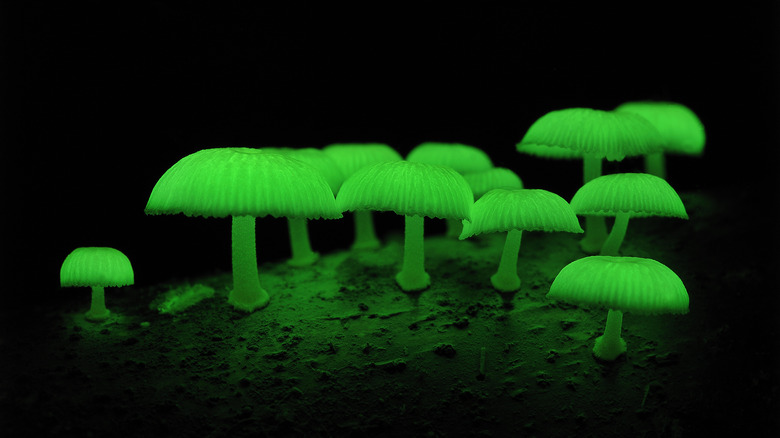Humans Actually Glow. Here's Why You Can't See It.
"This is the skin of a killer, Bella." OK, so maybe we don't glow like Edward Cullen (Robert Pattinson) standing in front of Bella Swan (Kristen Stewart) in that iconically meme-able "Twilight" scene, where they're standing deep in Forks' forest — but, you did read that headline right. Humans do, in fact, glow (via Science Alert). And we also don't mean that kind of glow you get when you're pregnant, in love, or fresh out of the salon after getting a new haircut.
No, we mean actually glow — like emitting detectable light. It's too bad we can't see it. Actually, it's quite possible that no living creature can see it, not even butterflies — who are said to have the widest range of vision, even seeing in ultraviolet to aid in their mating rituals (via The Atlantic). The only way it can be seen is through highly sensitive cameras, in pitch-black darkness, during certain times of day (we're kind of like glow sticks).
Why do we glow?
Humans are said to glow — despite not being able to actually see it ourselves — due to metabolic processes (via Science Alert). When we metabolize our food to burn energy, free radicals are created through cell respiration. During these processes, molecules interact with fluorophores — a chemically diverse, fluorescent molecule (via NanoTemper). When this happens, bioluminescence is emitted that can only be detected by high-powered lenses.
This process is much different than that of other bioluminescent creatures, like algae or anglerfish (aka the ugliest fish in the world) — which employ millions of bacteria to help them become glowing fish traps (via Science Alert). Instead of glowing to attract food, we actually glow because of the food we eat. Well, more so because of the energy produced by the food we eat. Sadly, this superpower-like bioluminescence can't be seen by the naked eye, as mentioned, because the light is about 1,000 times lower in sensitivity. Yet, a group of scientists were still able to crack the mystery.
If we can't see it, how do we know it's there?
Back in 2009, a group of Japanese scientists used extremely sensitive, high-powered cameras, in pitch-black darkness, to monitor five male volunteers for signs of bioluminescence (via Science Alert). They photographed the participants every 20 minutes for three hours, over the course of three days. The most obvious transmitters of light picked up in the pictures were centered around the head — in the cheeks, neck and forehead. It was also recorded most prominently around the late afternoon, with its dimmest times being late at night and the morning.
In fact, the absolute dimmest level of bioluminescence reached was around 10 a.m., with its peak at 4 p.m. — which makes sense as this is around the time the human body exerts the most energy, via NBC News. (You ever get that weird spark of energy just after work, and after being tired all day long?) It also made sense that the participants' heads glowed brightest out of any body part, as that region sees the most sun — according to the researchers. So no, while we may not glow like teen-beloved, vampiric lover boys or pregnant women — we do glow with bioluminescence.


